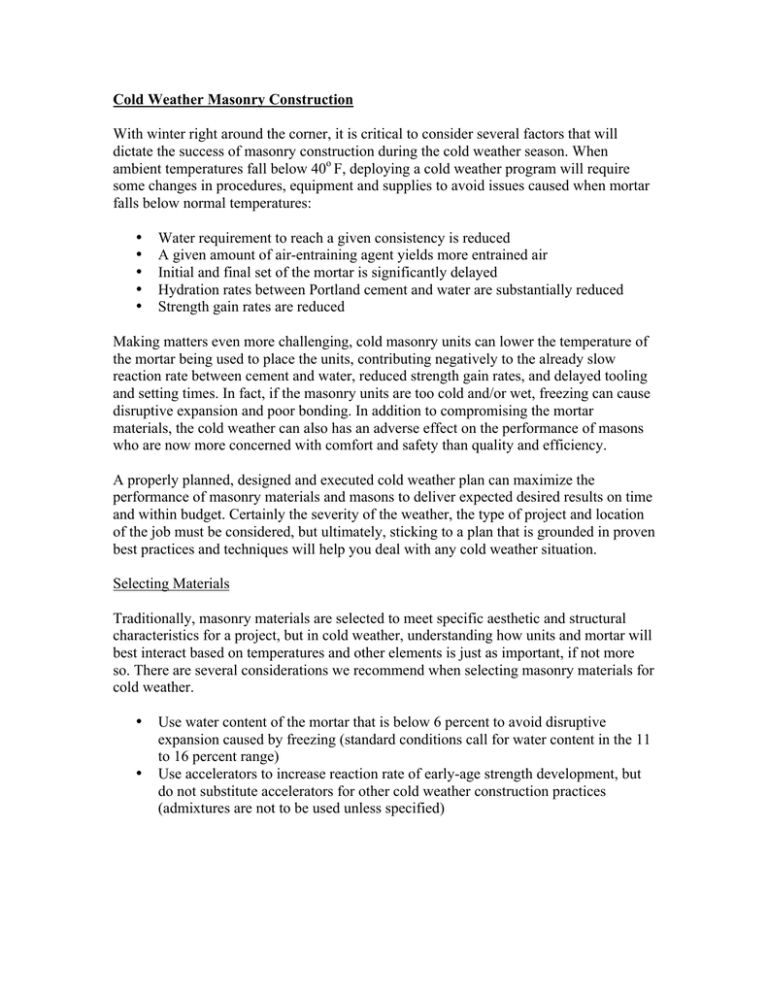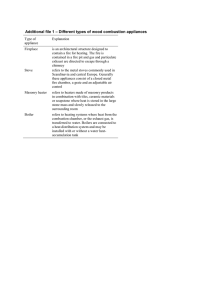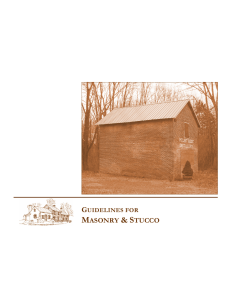In the Mix Cold Weather Masonry8.20.12
advertisement

Cold Weather Masonry Construction With winter right around the corner, it is critical to consider several factors that will dictate the success of masonry construction during the cold weather season. When ambient temperatures fall below 40o F, deploying a cold weather program will require some changes in procedures, equipment and supplies to avoid issues caused when mortar falls below normal temperatures: • • • • • Water requirement to reach a given consistency is reduced A given amount of air-entraining agent yields more entrained air Initial and final set of the mortar is significantly delayed Hydration rates between Portland cement and water are substantially reduced Strength gain rates are reduced Making matters even more challenging, cold masonry units can lower the temperature of the mortar being used to place the units, contributing negatively to the already slow reaction rate between cement and water, reduced strength gain rates, and delayed tooling and setting times. In fact, if the masonry units are too cold and/or wet, freezing can cause disruptive expansion and poor bonding. In addition to compromising the mortar materials, the cold weather can also has an adverse effect on the performance of masons who are now more concerned with comfort and safety than quality and efficiency. A properly planned, designed and executed cold weather plan can maximize the performance of masonry materials and masons to deliver expected desired results on time and within budget. Certainly the severity of the weather, the type of project and location of the job must be considered, but ultimately, sticking to a plan that is grounded in proven best practices and techniques will help you deal with any cold weather situation. Selecting Materials Traditionally, masonry materials are selected to meet specific aesthetic and structural characteristics for a project, but in cold weather, understanding how units and mortar will best interact based on temperatures and other elements is just as important, if not more so. There are several considerations we recommend when selecting masonry materials for cold weather. • • Use water content of the mortar that is below 6 percent to avoid disruptive expansion caused by freezing (standard conditions call for water content in the 11 to 16 percent range) Use accelerators to increase reaction rate of early-age strength development, but do not substitute accelerators for other cold weather construction practices (admixtures are not to be used unless specified) Protecting, Storing and Heating Materials All masonry materials should be protected from rain, snow, ice and other elements that might jeopardize performance. We recommend the following tips for protecting, storing and heating materials on cold weather projects. • • • Tightly wrap masonry units and mortar materials with canvas or polyethylene tarps, and store off the ground to avoid moisture Cover sand piles to prevent contamination with mud, clay and other harmful materials Heat masonry materials to achieve a grout temperature of 40o F to 120o F at the time of grout placement Protecting Work Areas and Construction The Specification for Masonry Structures provides requirements for certain cold weather construction, but following the guidelines below will help make sure project site is set up for safe and efficient work. • • • • Install wind breaks when wind velocity exceeds 15 mph and daily mean temperatures are between 20o F to 25o F Provide heated enclosures that maintain a minimum temperature of 32o F in areas with active masonry construction Cover completed masonry work with a weather resistant cover for 24 hours when mean daily temperatures on a job site are between 25o F to 40o F Cover masonry work with insulating blankets for 24 hours when mean daily temperatures on a job site are between 20o F to 25o F For more information on cold weather masonry construction, contact your local QUIKRETE bulk mortar sales representative or complete the Contact Us request form.




